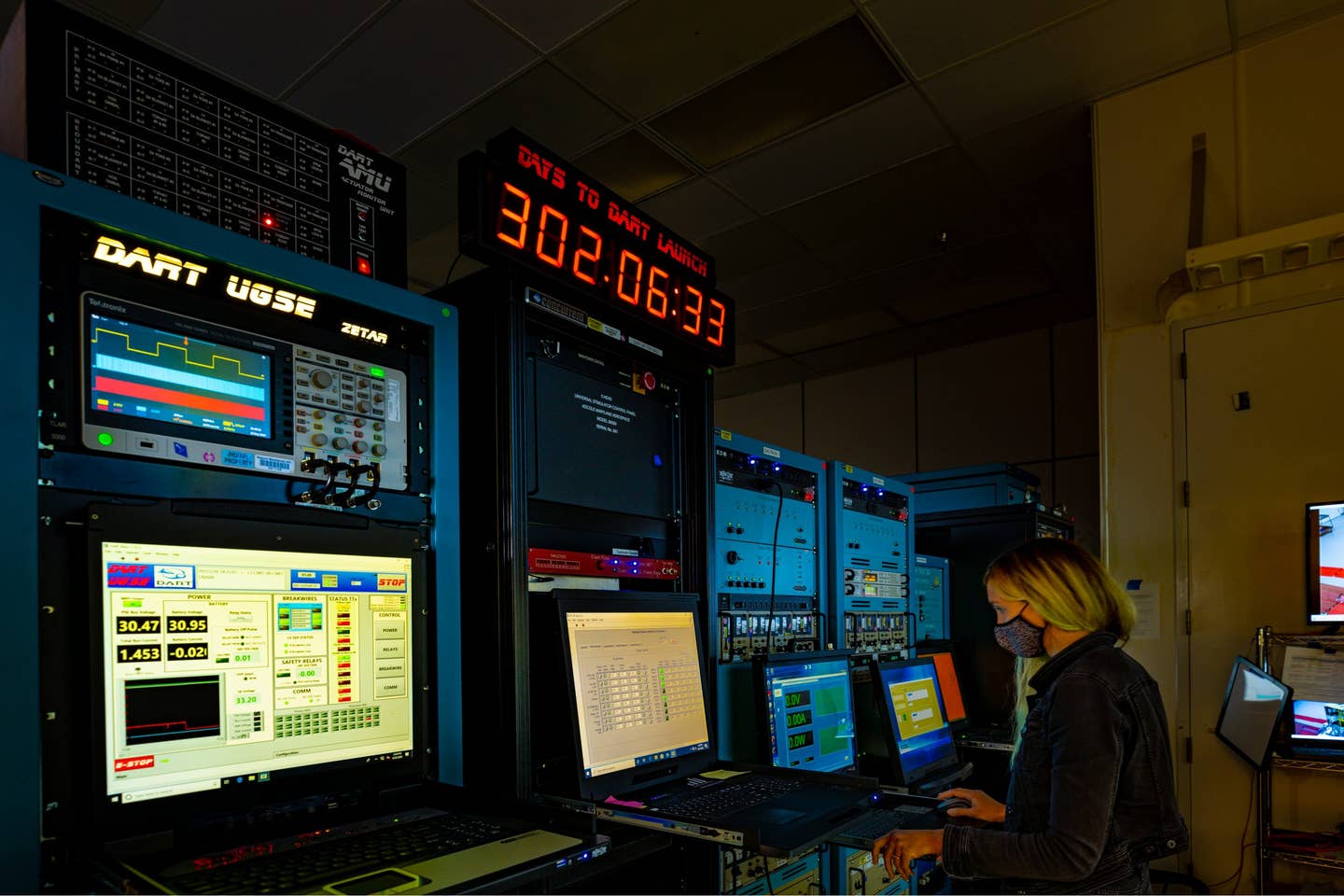Global Efforts To Protect Earth Against Asteroids
NASA’s asteroid mission comes as governments and international groups plan for the unthinkable.

In the Ground System Equipment control room at APL, engineers perform tests and simulations on the DART spacecraft, which sits behind glass in the clean room. Credit: Credit: NASA/Johns Hopkins APL/Ed Whitman
NASA’s Double Asteroid Redirection Test (DART)—history’s first mission aimed at changing the trajectory of an incoming asteroid—is set to launch Wednesday from Vandenberg Space Force Base in California.
While the threat from possible asteroids hurtling toward Earth is remote, NASA says it wants to develop and test planetary defense systems just in case.
In fact, for years government and private groups around the world have been considering options on how to respond to asteroid threats.
Let’s take a quick look at organizations and proposed protocols designed to monitor and respond to potential threats posed by so-called near Earth objects (NEOs).
Space Missions Planning Advisory Group (SMPAG)
Since 2016, this United Nations-facilitated group of international space agencies has been responsible for:
- laying out framework, timeline, and options for initiating and executing how to respond to NEOs
- informing the civil-defense community about the nature of impact disasters
NEOShield
In 2012, the European Commission began the NEOShield program, which studied three anti-asteroid techniques:
- Kinetic Impactor: a spacecraft “transfers momentum to an asteroid by impacting it at a very high velocity”
- Blast Deflection: using a “nuclear device” or other explosive to detonate near or slightly beneath an asteroid’s surface
- Gravity Tractor: in which a spacecraft hovering under power in close proximity to an asteroid uses the gravitational force between the asteroid and itself to tow the asteroid onto a safe trajectory relative to the Earth.
NEOShield recommended “…an experimental test of a kinetic impactor along with a characterization, monitoring and verification system. …This mission would produce the most significant advances in understanding and provide an ideal chance for international collaboration in a realistic mitigation scenario.”
Credit: NASA/Johns Hopkins APL
U.S. National Interagency Working Group on Near-Earth Object Impact Threat Emergency Protocols (NITEP)
In 2019, NITEP began studying how the U.S. should respond to potential asteroid threats. The group offered these recommendations:
- Consider executing a space-based impact prevention mission in any scenario that meets the following conditions:
- Impact predicted to be within 50 years
- Impact probability greater than 10 percent
- Prevention is technically feasible
- Prevention mission is substantially more likely to decrease than to increase the probability of impact
- Waiting longer to improve confidence in impact prediction will substantially decrease the likelihood of successful prevention
- Execute space-based impact prevention if the scenario meets least one of these benchmarks:
- Impact would likely result in loss of many lives within the U.S. (100 or more)
- Impact would likely result in U.S. economic cost exceeding the financial cost of prevention
Why Asteroids Fly Near Earth
Comets and asteroids end up flying relatively close to Earth because they’ve been nudged by the gravitational attraction of nearby planets into orbits that take them in our general vicinity.
In fact, according to NASA, about every 10,000 years, rocky or iron asteroids larger than about 100 meters reach the Earth’s surface and “cause local disasters or produce the tidal waves that can inundate low-lying coastal areas.”
On average, NASA says, “every several hundred thousand years or so, asteroids larger than a kilometer could cause global disasters.”
Bottom line: If scientists can get several years warning about an asteroid on an Earth-colliding trajectory, NASA says “existing technology could be used to deflect the threatening object away from Earth.”

Sign-up for newsletters & special offers!
Get the latest FLYING stories & special offers delivered directly to your inbox






